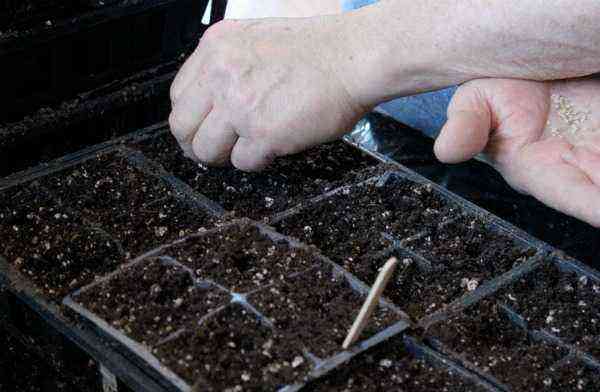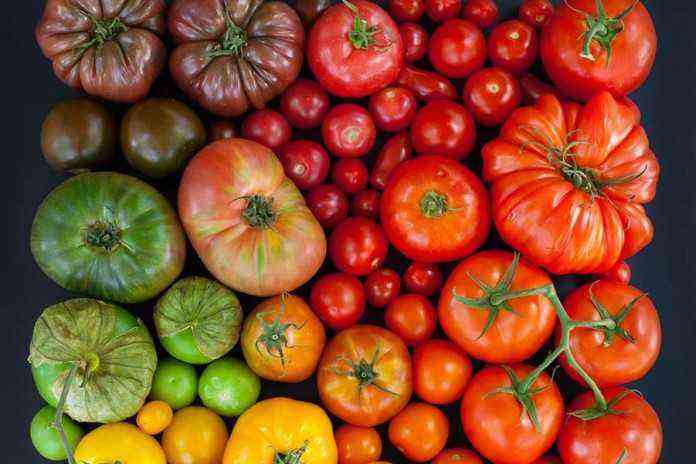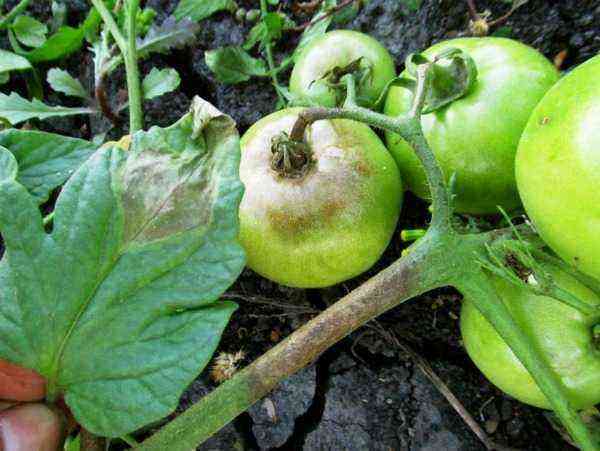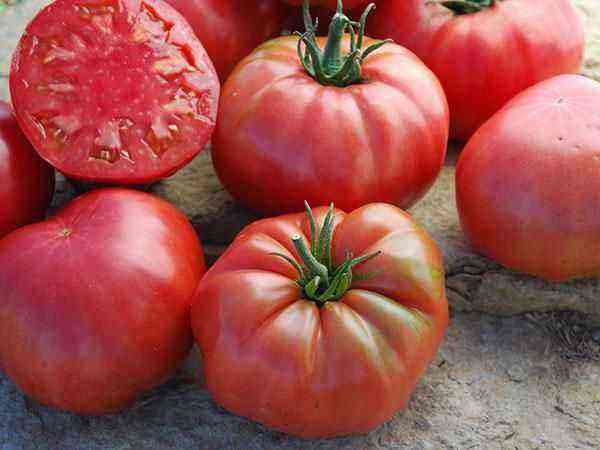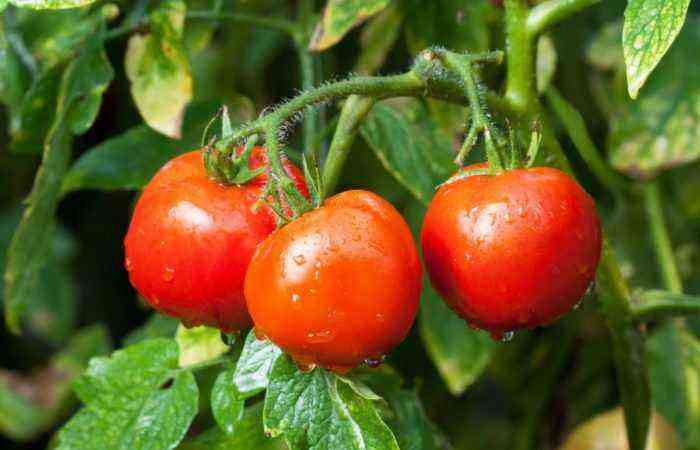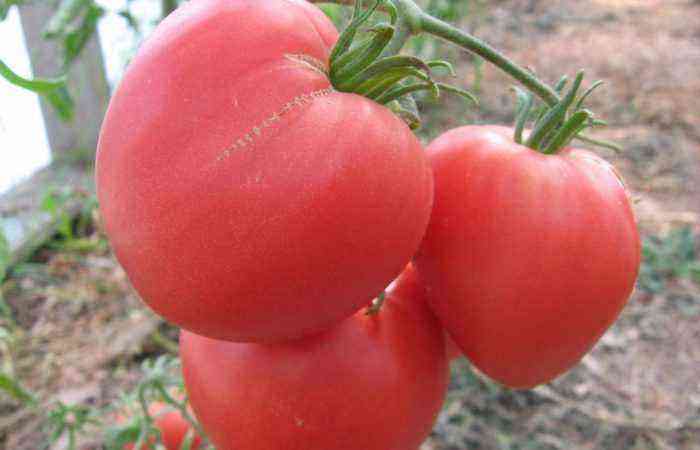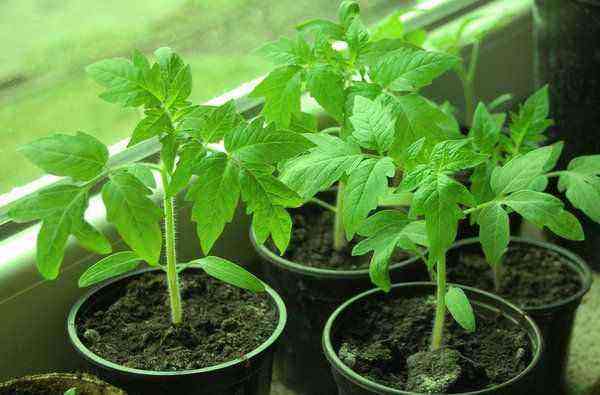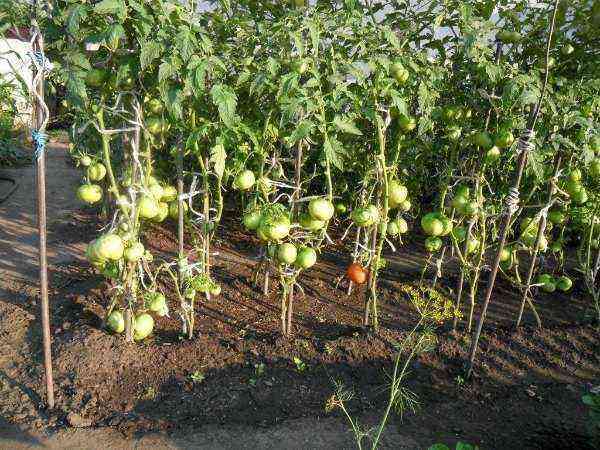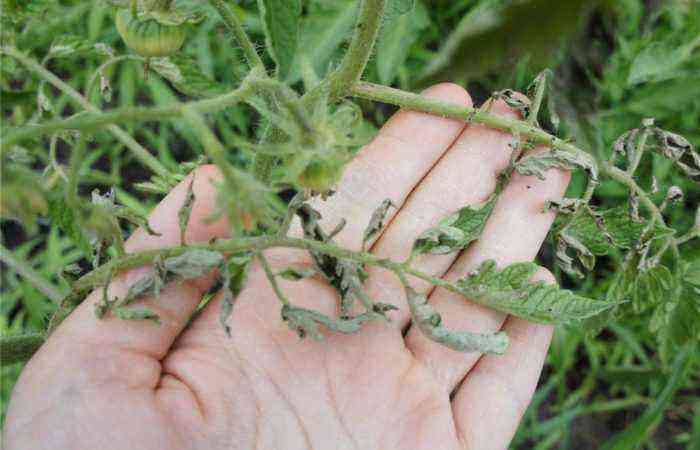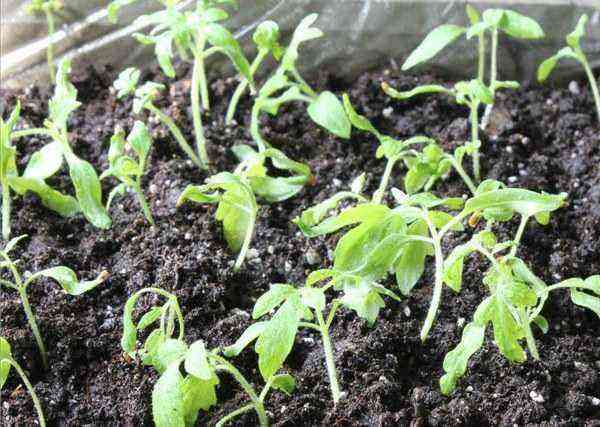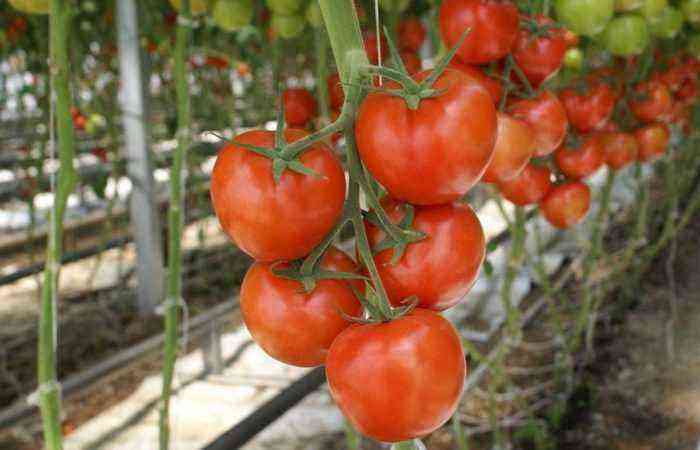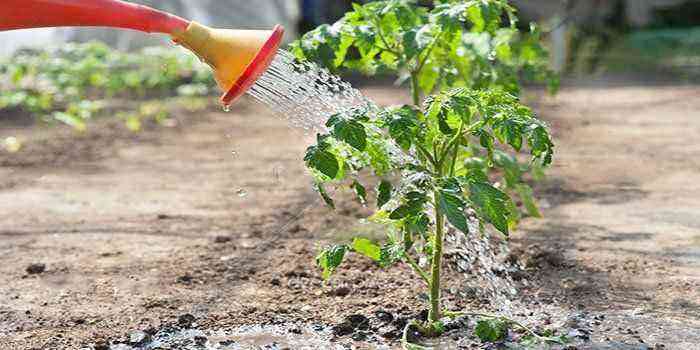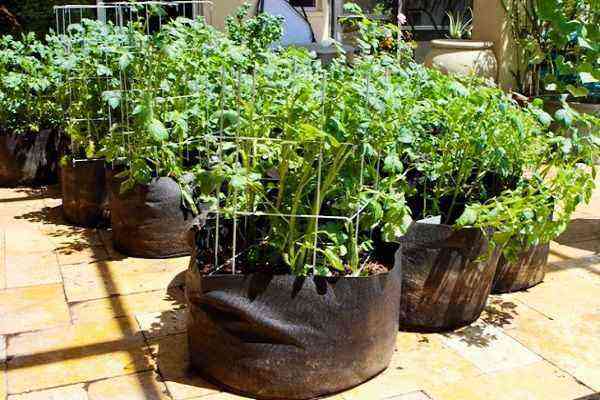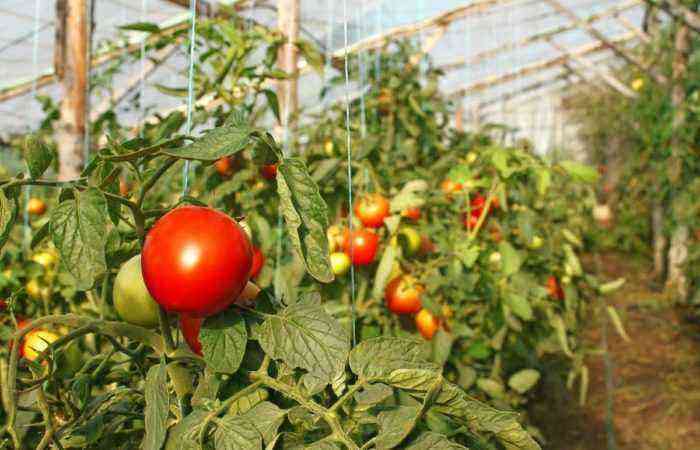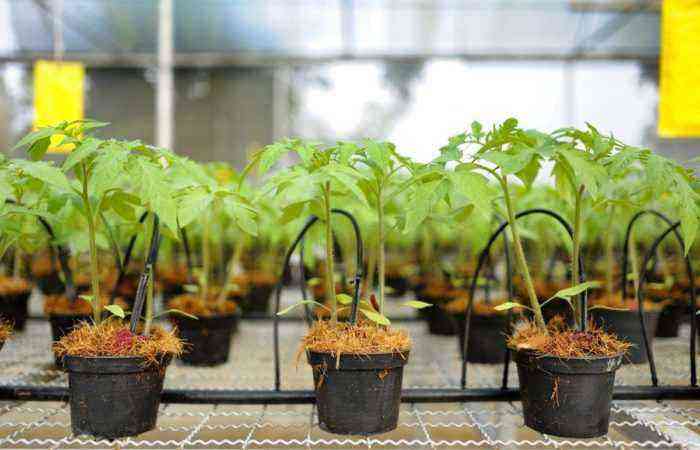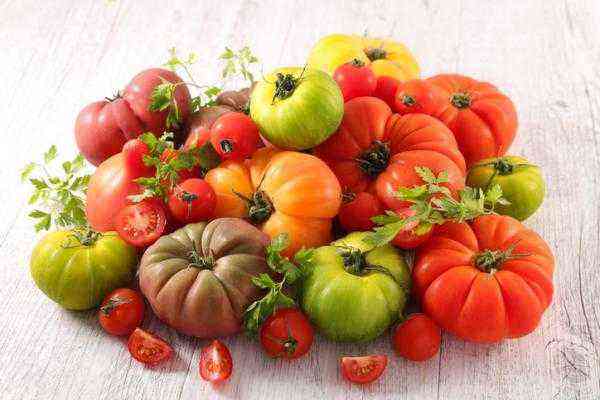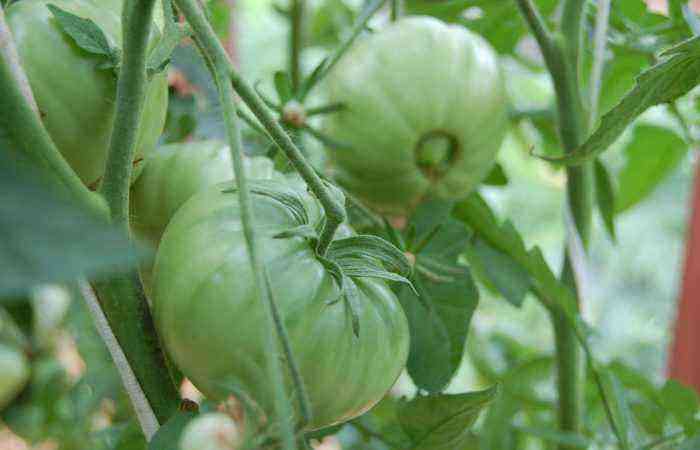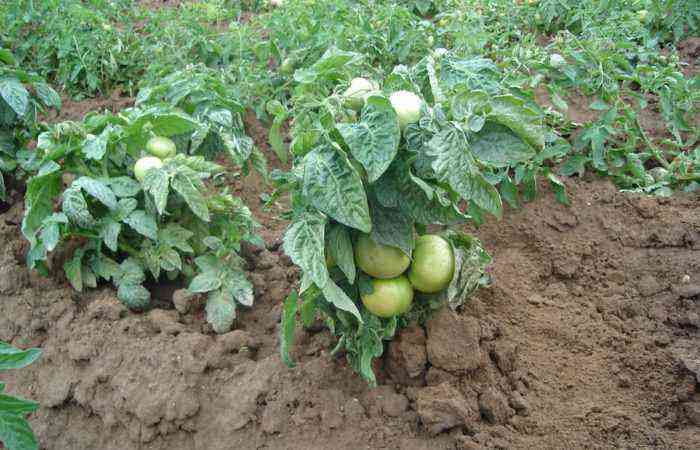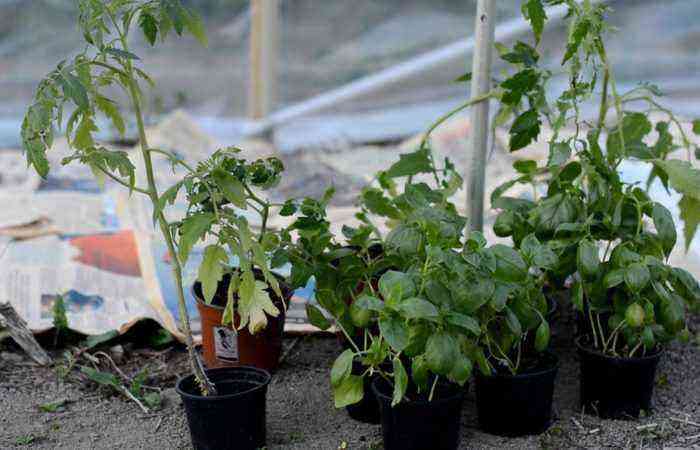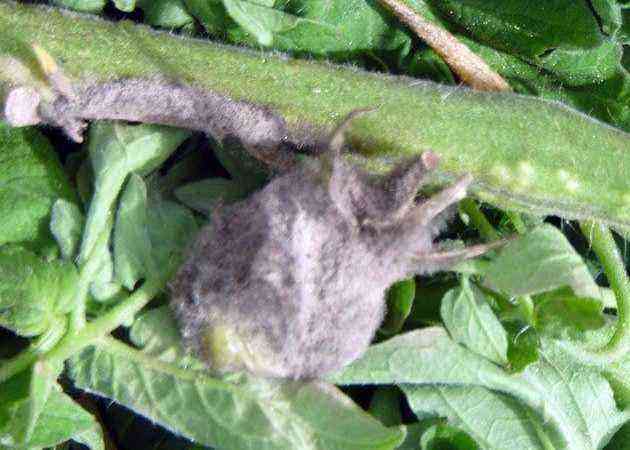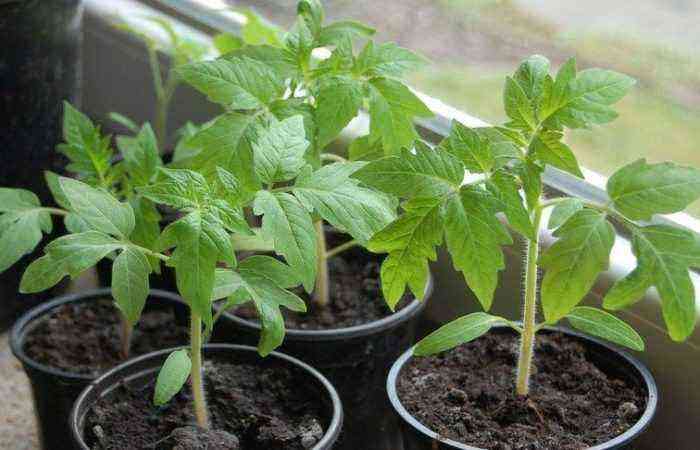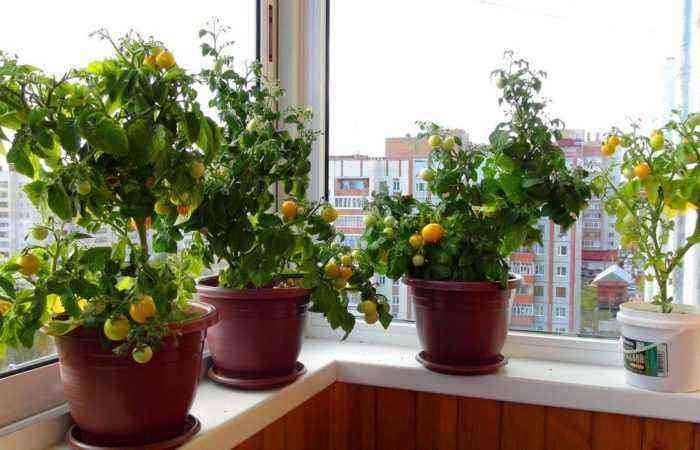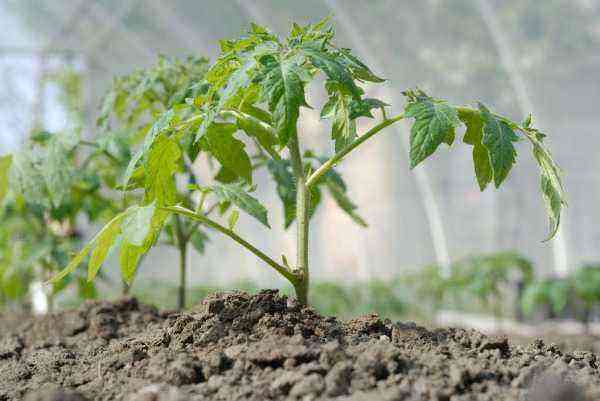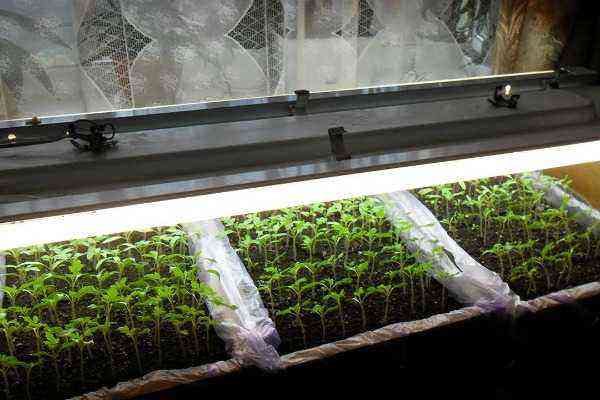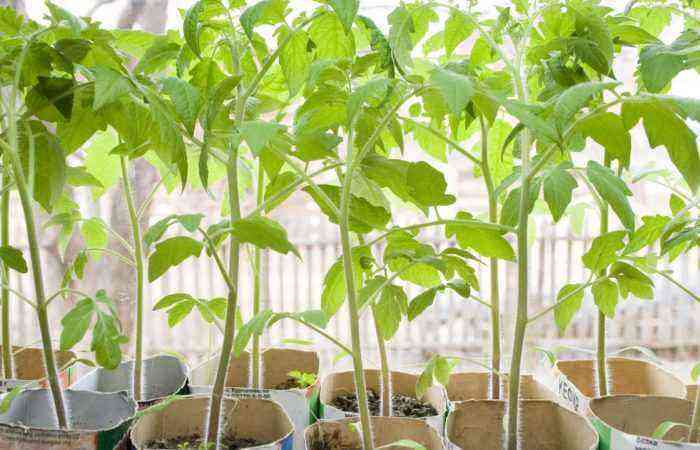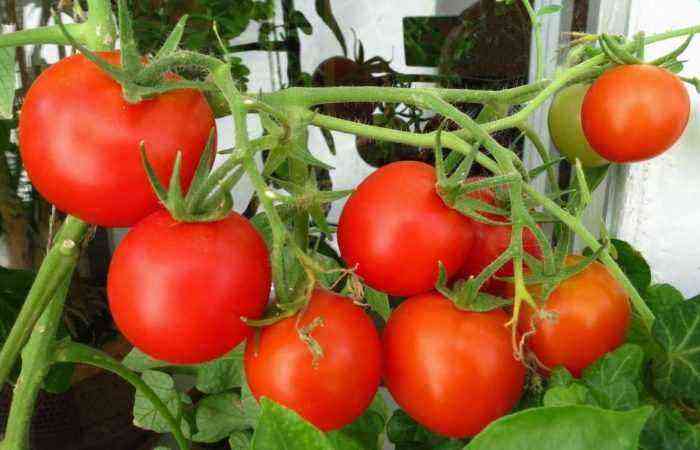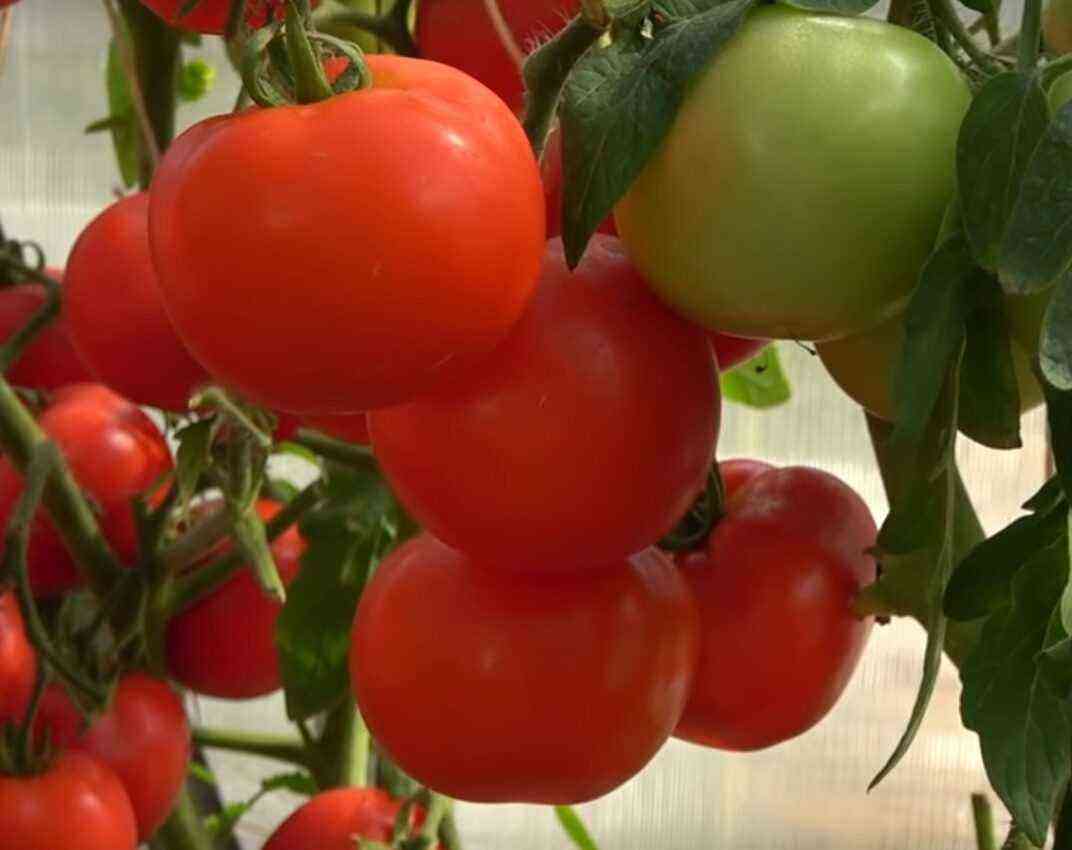If you do not have a garden or a summer house, this does not mean that you cannot grow delicious and fragrant tomatoes with your own hands. This is perfect for a balcony. But to get a rich harvest, you need to choose the right variety, and provide the plants with good care and suitable conditions for growth.
Where to start – choosing a variety

In order for the idea of uXNUMXbuXNUMXbgrowing tomatoes on your own balcony to be successful, you need to choose the right variety. It should grow well in low sunlight and have compact bushes.
Most often, such dwarf undersized varieties are grown on their balcony, such as: Bonsai, Japanese Potted Tomato, Yamal, Pink Angel, Cow’s Ear, Renet, Ruby, Bush, Balcony Miracle, Oak, Canada News and Florida Petit.
These varieties grow well both in a sunny place and in the shade, which is unusual for this crop. The bushes reach a height of about 35 centimeters, and they do not need a garter.
You can also choose early varieties for growing on the balcony: Siberian early and White filling. The following undersized varieties are also suitable: Cherry, Leopold and Pinocchio.
How to grow tomatoes on a balcony – step by step instructions
The technology for growing tomatoes on a balcony is significantly different from that used for cultivating tomatoes in open ground. Half of the success depends on how correctly you choose the land, containers, and also sow the seeds. The step-by-step instructions below will help you with this.
Selection of containers
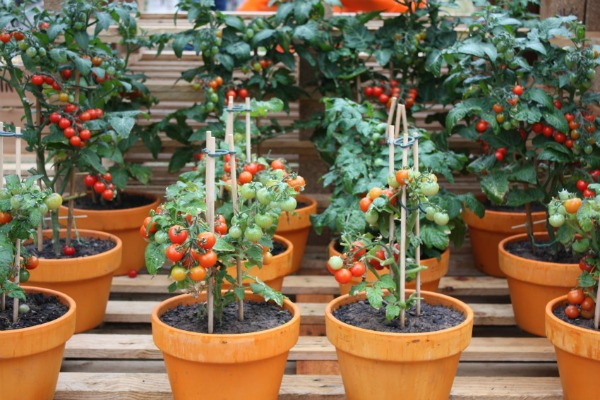
When choosing a container suitable for growing tomatoes on a balcony, you need to take into account the fact that each bush must grow in an individual container. Pay special attention to the volume, it should be at least 3-5 liters. What material the container will be made of does not really matter.
This culture grows well both in a clay pot, a plastic bucket, a wooden box, and in a cut plastic bottle. At the bottom of the selected container, it is imperative to make a good drainage layer, the thickness of which must be at least 30 mm.
Soil preparation
Tomatoes on the balcony will be able to grow and develop well only in a suitable soil mixture. In order to prepare it, combine humus, sod and peat (sawdust), all these components are taken in equal parts. In the resulting mixture, you can pour quite a bit of superphosphate. Also, for growing such a plant, purchased ready-made soil mixture for tomatoes is quite suitable. In no case do not use a ready-made soil mixture intended for growing flowers; tomatoes will not be able to fully grow and develop in it.
Seed preparation
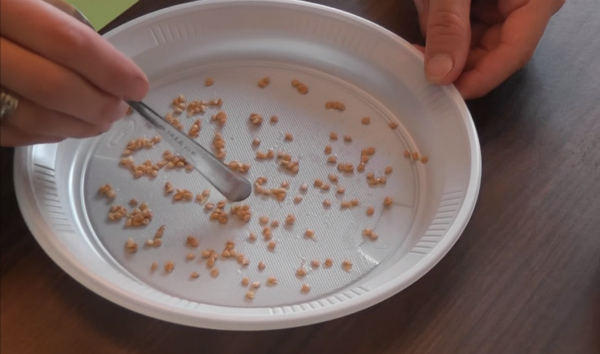
In order for the tomato seeds to sprout faster and the seedlings to be stronger, they must be subjected to special pre-sowing preparation. If you decide to sow several varieties at once, then mixing them is not recommended. In this case, the seeds of each of the varieties must be prepared for sowing separately, and in order not to get confused, they can be signed.
Pre-sowing preparation:
- First, prepare a solution of potassium permanganate, the color of which should be pinkish. Place the seed in it for 3 hours. Instead of potassium permanganate, you can take chemicals such as Trichodermin or Fitosporin. Such treatment is necessary in order to destroy the pathogens of various diseases, the presence of which you may not even be aware of.
- Then the seed is treated with a biostimulant (for example, Zircon or Epin-extra). Thanks to this treatment, the germination of seeds will significantly improve. If the seed material is damaged, then such processing will allow it to be reanimated.
- Fold the seed into a damp cloth and place it on the bottom shelf of the refrigerator. He will stay there for two days. Such a hardening procedure will increase the resistance of future bushes to sudden changes in air temperature, as well as to cold snaps at night.
- As a rule, tomato seeds are not germinated before sowing, because they already have excellent germination. After hardening, dry the seed material a little to flowability and you can start sowing.
Sowing
Tomato seeds are sown first in small containers, for example, in special cups or cut plastic bottles. Fill them with prepared soil mixture, which must be spilled with freshly boiled water. Wait until the substrate has cooled down, and sow 2 or 3 seeds in each cup. The containers are covered with a film on top and transferred to a warm place.
Do not allow the surface of the soil mixture to dry out.
Also for sowing, you can use a common box, the height of which should be about 8 centimeters. Fill it with soil mixture, which is also spilled with boiling water. On the surface of the cooled substrate, make grooves, the depth of which should be about 10 mm, the distance between them should be at least 40 mm.
Spread the seeds in them, the distance between them should be about 20–30 mm. After the grooves are covered with the substrate, the container is covered with glass (film) from above. Move it to a warm place.
Shoots
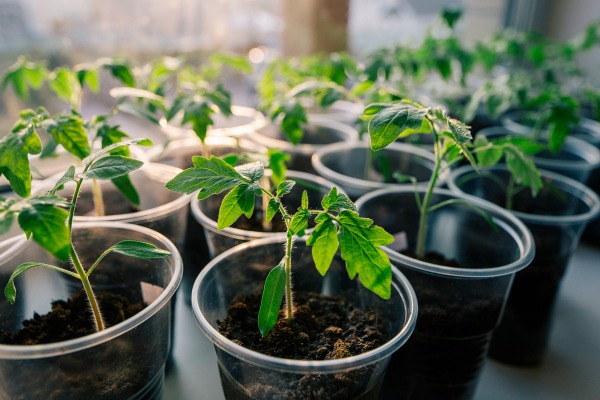
As a rule, tomato seeds for seedlings are sown in the last days of February, while the first seedlings should appear in early March. Once this happens, remove the cover and move to a well-lit window sill.
When most of the seedlings appear, take them out to the balcony and organize additional lighting for them. Remember that if the seedlings of tomatoes do not have enough light, then it will begin to actively stretch and will grow very weak. Make sure that the balcony is not colder than 20 degrees.
After the seedlings that have appeared grow up a little and get stronger, the air temperature should be reduced to 18 degrees.
Seedlings should not be watered very often and abundantly, because this can cause the development of a black leg, which can kill most of the seedlings. For irrigation use well-settled water at room temperature. When the substrate is moistened, its surface is very carefully loosened to a shallow depth. To avoid loosening and reduce the number of waterings, the surface of the substrate between the bushes is covered with a thin layer of mulch (peat).
7-15 days after the emergence of seedlings, they are fed with Heteroauxin or Kornevin. The nutrient solution is applied to the soil mixture after watering. In total, before picking, you will need 3 such top dressings, which are carried out at intervals of one and a half weeks.
Seedlings dive into permanent pots 4 weeks after their appearance. To begin with, water the seedlings abundantly, then stretch the bush, clasping its stem near the base with your fingers. At the same time, a small earthen lump should remain on the roots.
With disinfected sharp scissors, shorten the root by a third. Next, make a recess in the soil mixture with a stick and place the plant in it up to the cotyledon lobes. Due to this, in seedlings, the root system will begin to grow not in depth, but in breadth. Moisten the substrate and lightly tamp its surface around the stem.
Vigorous varieties are planted one at a time in an individual container, and undersized varieties – 2 each, while the distance between them should be at least 50–100 mm.
When planting seedlings in larger boxes, a distance of about 0,4 m is observed between the bushes. For the first time after transplantation, protect the plant from direct sunlight, and the air temperature at this time should be 18–20 degrees.
Caring for tomatoes on the balcony
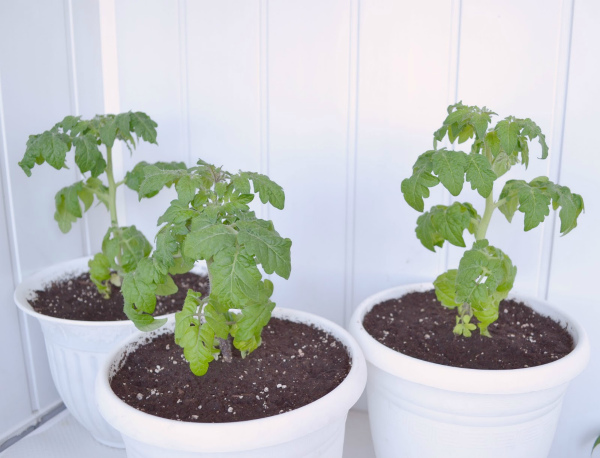
In order for the tomatoes on the balcony to grow normally and give a rich harvest, they need to be provided with proper and timely care.
Watering
For watering tomatoes, water that has been settled for a day is used, which should not be cold. Watering is carried out as the substrate dries in containers. Before the ovaries appear, and throughout the period of formation and growth of the fruits, make sure that the soil mixture is slightly damp (not wet) at all times. After fruit ripening begins, the number of waterings is recommended to be reduced.
Additional fertilizing
As a rule, tomatoes are grown on balconies in urban areas, where it is not easy to find organic fertilizers. The disadvantage of organic matter is that it has a sharp and unpleasant odor. Therefore, in this case, it is recommended to use mineral fertilizers for feeding tomatoes, for example, Kemiru-universal and Mortar.
Do not apply too much fertilizer to the soil, as this can have a very negative effect on plants.
Before feeding, carefully read the instructions that can be found on the package, and try to follow all the recommendations and do not exceed the dosage. As a rule, top dressing is carried out systematically 1 time in 1,5 weeks.
Garter
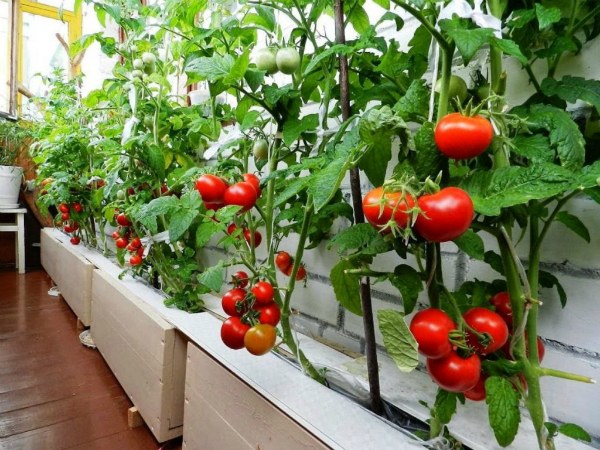
Since it is recommended to grow undersized and dwarf varieties on the balcony, the stem height of which is not more than half a meter, they do not need a garter. If you decide to grow medium-sized and vigorous varieties of tomatoes, then be prepared for the fact that they will have to be tied up and stepchild very often.
Formation
As the bush grows, shoots begin to grow in the leaf axils, which only take away the strength of the plant, which reduces the yield. Therefore, experts advise to carry out stepsoning systematically. Immediately after the extra shoots have reached a length of 20-30 mm, they are carefully broken out by hand. To avoid infection, all wounds on the bush after pinching are treated with dry wood ash. At the same time, it is recommended to leave 2 or 3 stems on each bush. And on each of the stems, you need to leave 4 brushes with ovaries, after which they pinch their tops.
Stepsons need to be cut off throughout the entire growing season. Even at the same time as stepchildren, it is recommended to remove the lower leaf plates that are in contact with the surface of the substrate. This will improve ventilation, as well as significantly reduce the likelihood of infecting tomatoes with infectious diseases.
Harvesting

Harvest fruits as they ripen. Ripe fruits should be picked regularly. If this is not done, then they will ripen more slowly.
Tips from seasoned gardeners
If you are growing tomatoes on the balcony for the first time, then the advice of more experienced gardeners will definitely come in handy:
- Tomatoes are taken out to an unglazed loggia no earlier than April, while in the daytime the temperature should not be lower than 23 degrees, and at night – not lower than 13 degrees. If it is colder outside, then bring the bushes into the house and put them on the windowsill.
- If the bushes are grown on a closed balcony, then special attention should be paid to the level of air humidity, which should be in the range of 60–65 percent. This can be achieved by regular ventilation of the balcony.
- Do not add too much nitrogen and organic fertilizers to the substrate, because due to the excess nitrogen in the soil, the bushes will grow strong and large, but there will be very few fruits on them.
- The stems of the bushes may break due to the large number of fruits. To avoid this, they must be tied up.
- Systematically loosen the surface of the substrate in containers. Thanks to this, the roots will receive a sufficient amount of oxygen, which will have a beneficial effect on the development of bushes and their productivity. Also, timely loosening of the soil will help prevent the appearance of mold on its surface. If after loosening the amount of substrate in the pot has decreased, then be sure to add it.
- Self-pollinating varieties of tomatoes are best suited for growing on the balcony. However, if the bushes are on a glazed balcony, then they still have to help pollinate, since in the absence of wind, pollen will not crumble from the flowers. To do this, during flowering, regularly lightly tap on the brushes and on the stem of the plant.
- In order for the bush to grow quickly and begin to bear fruit ahead of time, you can resort to the following trick: grab the stem of an adult plant at the very base with your hand and pull it up a little, as if trying to pull it out. Thanks to this, all the small roots will come off the bush, and it will become more powerful and give more fruits.
Balcony tomatoes – growing completely in one video
Tomatoes on the windowsill. How to grow – video
Growing tomatoes on your balcony is not at all difficult. If you follow the above recommendations and properly care for the plants, they will certainly please you with tasty, fragrant and very healthy fruits.
